Home » Lab Automation » End-to-End Lab Automation
End-to-End
With end-to-end automation we are looking at automating entire lab workflows from start to finish. These automation setups are typically designed for high-throughput applications and run around the clock with minimal need for manual intervention, and are often built custom to fit specific customer requirements.
What is end-to-end lab automation?
End-to-end lab automation is the complete integration of lab instruments, workflows, and data systems into a single, connected process. It links every stage of an experiment, from sample preparation and execution to analysis and reporting. This eliminates manual handoffs, decreasing wait time and reducing variability.
By precisely coordinating hardware and software across entire workflows, end-to-end automation delivers faster, more consistent, and highly reproducible results while freeing up scientists to focus on research and innovation.
How BICO supports end-to-end lab automation
BICO enables end-to-end lab automation through its vendor-agnostic integration of advanced instruments and Biosero’s powerful Green Button Go Scheduler and Green Button Go Orchestrator lab automation software.
Green Button Go provides a flexible and scalable platform to connect and orchestrate multiple instruments, robotics, and workflows, allowing labs to automate entire experiments.
With Green Button Go and Biosero’s large device driver library, BICO customers can schedule and monitor experiments, coordinate devices across workcells or labs, and ensure reproducible, traceable results. Its vendor-agnostic design allows seamless integration with a wide range of instruments, allowing our customers to tailor our solution to their very specific experimental requirements.
Increased reproducibility
Let your experiments run consistently with minimal risk of human error.
Higher throughput
Run your lab 24/7, boosting your lab’s productivity and efficiency with minimal intervention.
Saving time and money
Reduce manual work and operational costs across workflows.
better data management
Centralize and organize data across instruments and experiments.
Who should consider end-to-end lab automation?
End-to-end lab automation is best suited for organizations with complex, high-throughput workflows where efficiency, reproducibility, and data integration directly impact outcomes. These include, but are not limited to:
Pharmaceutical and Biotech conducting large-scale screening, process development, or manufacturing, where automation can significantly shorten timelines and reduce costs over time.
Diagnostics and clinical testing labs that process large sample volumes benefit from the consistency and traceability that automation provides.
Additionally, established academic facilities and research consortia may consider it when standardization and centralized data management are key priorities.
For smaller labs or early-stage teams, implementing workflow or standalone automation may be a more practical first step. End-to-end systems deliver the greatest return when a lab has mature processes, stable protocols, and the need to coordinate multiple instruments and data streams across experiments.



